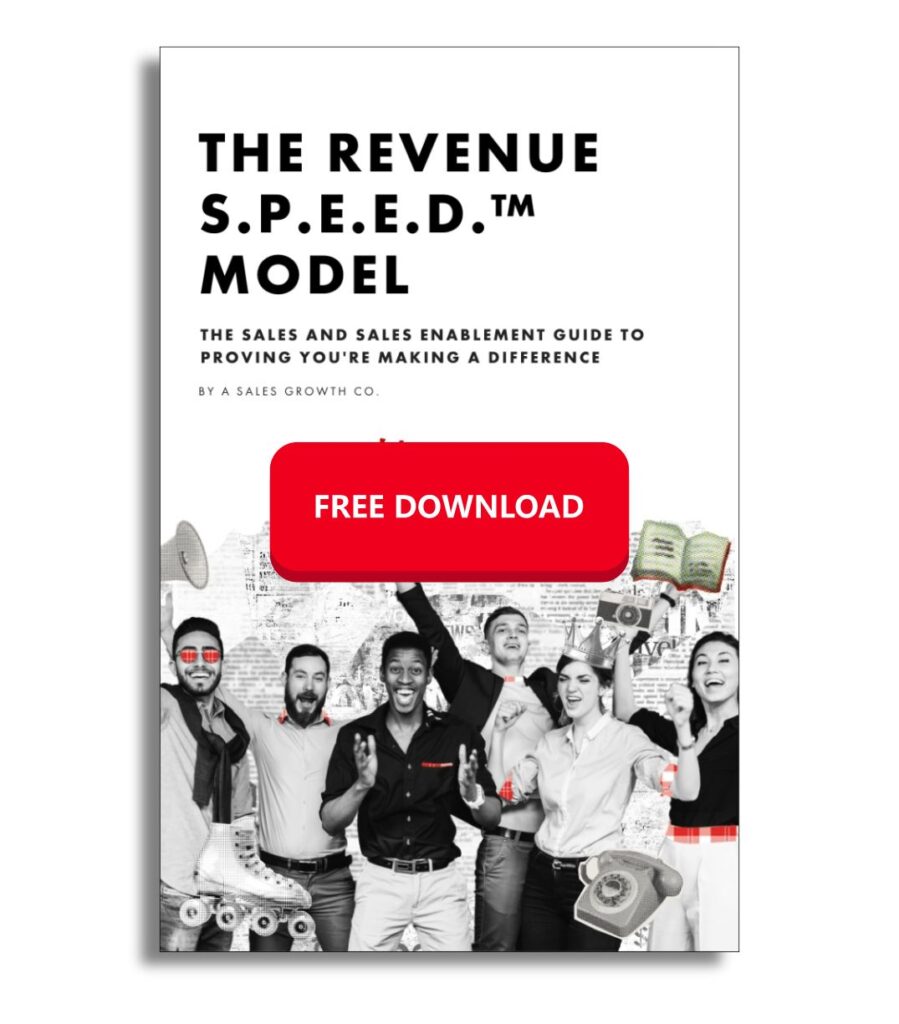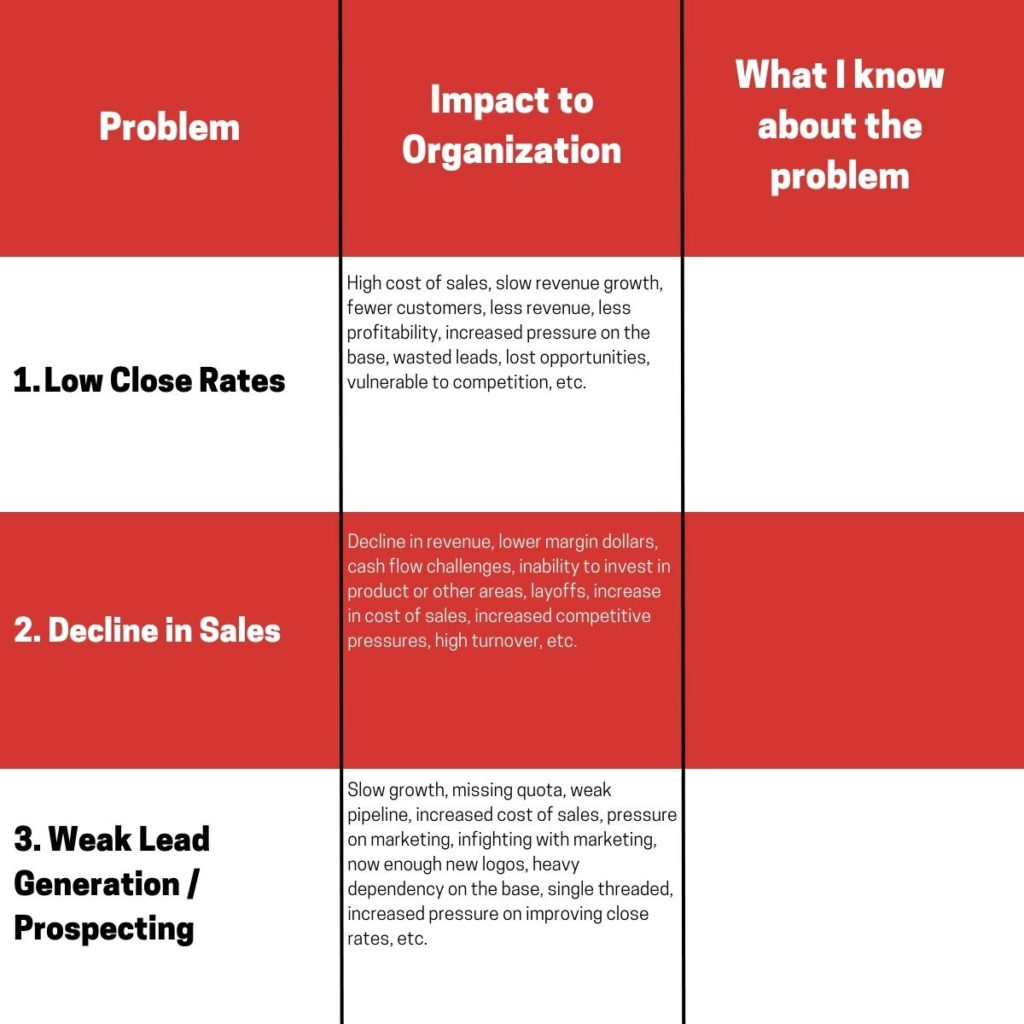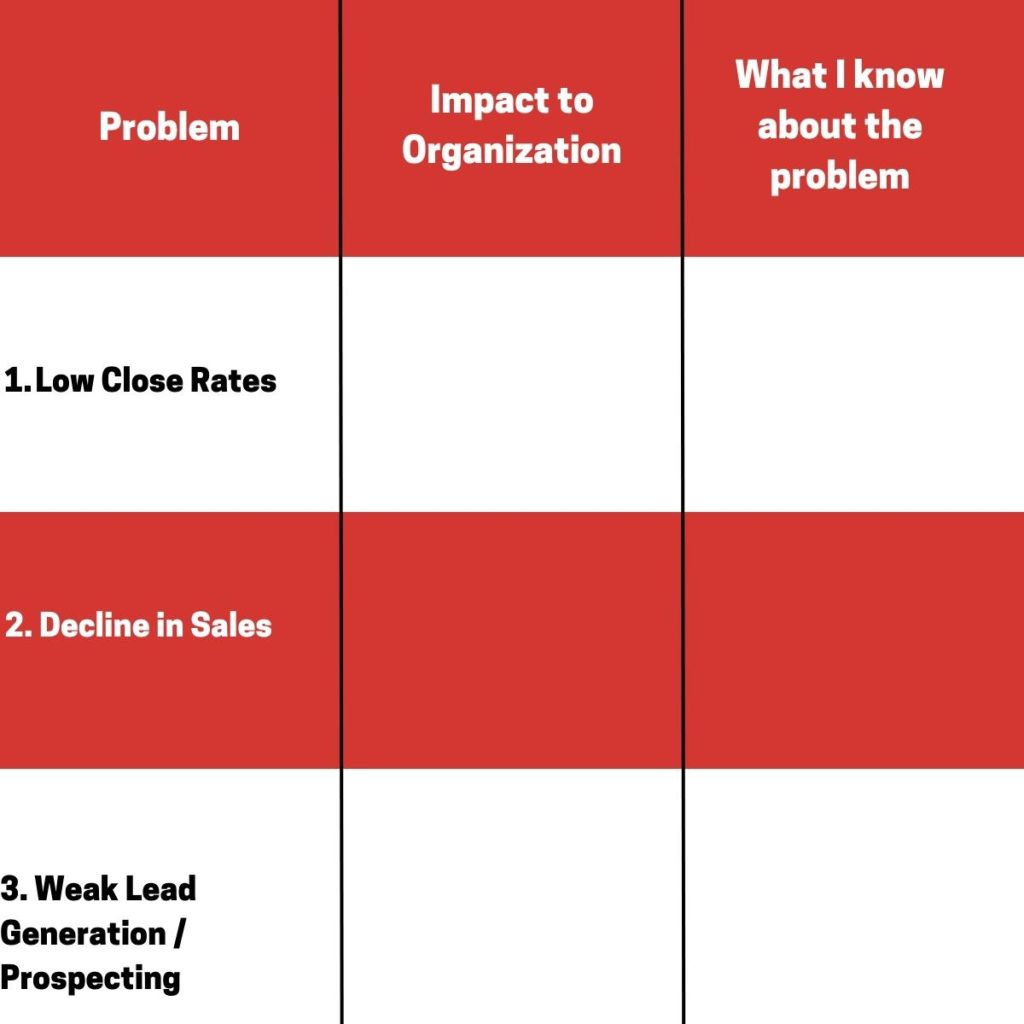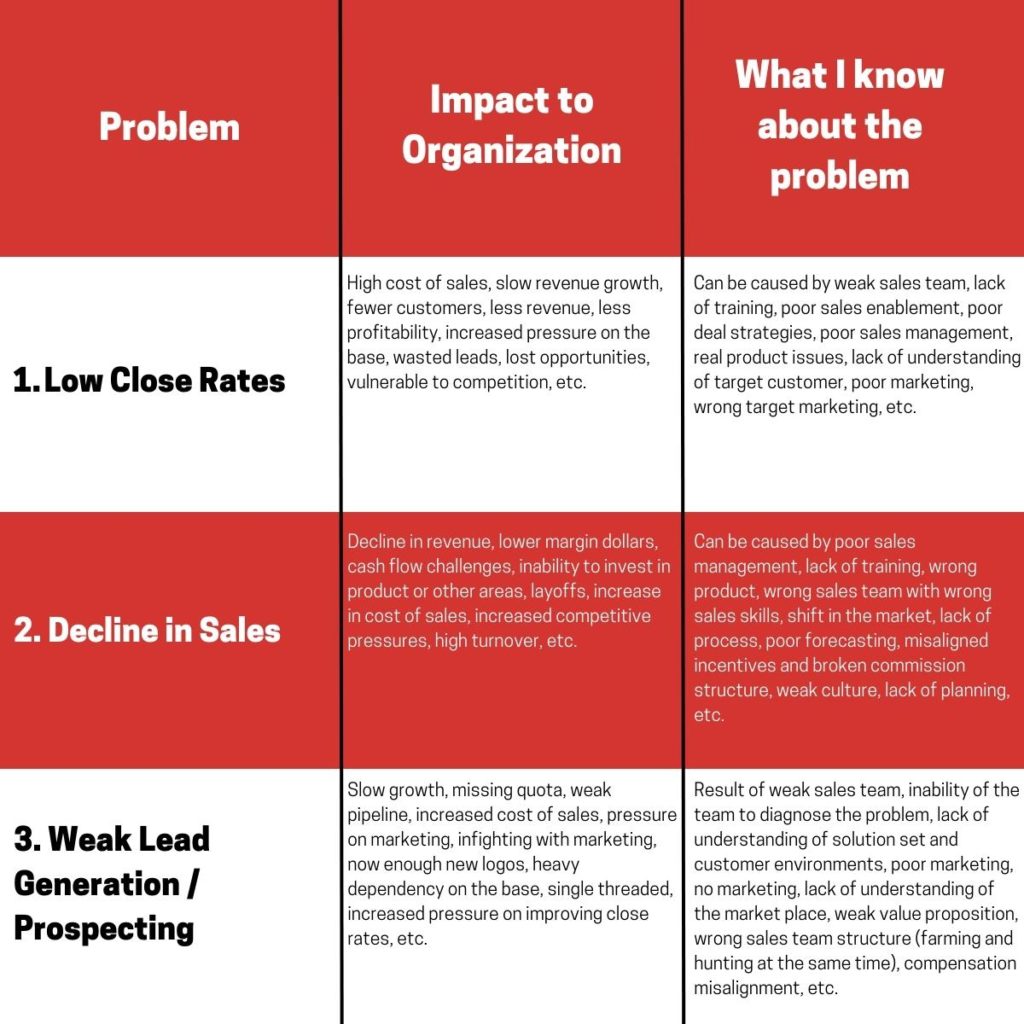Do you know what problems your customers might have, probably have or most certainly have?
When you reach out to a customer or prospect, do you have a good idea what problems they are challenged with BEFORE you call? You should. This knowledge is a crucial part of B2B sales organization who’s goal is to maximize revenue.
Increase sales with targeted problem-solving
Too often salespeople reach out to clients with no understanding of the problems their customer or prospect are dealing with. When this happens, salespeople are left feeling around in the dark, looking for a problem. The best salespeople do it differently. They already have a VERY good idea of the problems their target audience is dealing with before they make a single move.
When you don’t know what problems your target could be having, it is very difficult to ask the right questions. You aren’t in a position to be able to steer the customer to a productive, resolution oriented solution. You can’t bring value.
Empathy drives connections
To increase the chances of connecting with your customer or prospect you need to be able to identify with their problems AND the impact the problem has on their environment. You need to understand the nuances and implications of the problems on their business and their ability to meet their goals. It may be impossible to know them all, but being clear with as many as possible is essential.
Know before you go
Before you engage a prospect or client about your product or service make a list of all the potential problems they may be facing in their organization, problems your product or solution can address. Once you’ve listed as many as you can, describe the impact or challenges those problems create if not addressed. Finally, for each problem ask yourself how much you know about the problem, it’s root cause, how it comes to be, potential solutions, others that have it, why it exists etc. Be open and honest with yourself. Do you know enough about the problem? Do you need to do some research to better be able to engage prospects and clients regarding the problems.
This problem identification example is from a sales consulting perspective or anyone whose product or service could help with these “problems.”
Problem:
A clear and definable set of problems are identified. You know what problems exist or could exist. It allows you to have a clear understanding of where your products and service can assist your target customers and helps frame the conversation.
Impact of the problem:

Identifying the problem is critical, but it isn’t enough. You need to know WHY something is a problem. Take the time to understand what could be going on in the organization as a result of the problem. How is the organization negatively affected because the problem exists? Too many salespeople make the mistake of asking vague questions like, “How is this impacting your organization?” or “What’s keeping you up at night?” That’s not the same as identifying the buyer’s specific problem.
Knowing the potential impacts of the problem ahead of time can provide tremendous opportunities, particularly if you can identify impacts the potential buyer wasn’t even considering. This is how you establish credibility and shift their perspective of you from the traditional sales rep to a trusted advisor.
What you know about the problem:
Strive to be an advisor
Knowing what is causing the problem is where the “boom” comes from. Your ability to know where the problem is coming from, what is causing it, and how it can be addressed, puts you in the driver’s seat. It’s where salespeople become trusted advisors. It’s how your customers and prospects begin seeing you as someone who can provide solutions and not just someone who is selling a product.
Know the problem, recommend the solution
Before you talk to another customer or prospect make a list of all the problems they might have (that your product or service can solve). Dig into how those problems are negatively affecting their business and then get clear on how much you know about the problems. If you don’t know much about the problems, get studying. If you can’t list a good number of their problems, you now know why you aren’t at quota. If you don’t understand the impact the problem has on their business, you can’t explain why it’s a problem.
Do you want to grow sales, improve your win ratio, and beat quota? Then embed yourself in your customers problems. The more you know about their problems, they more you will sell.
Hey Sales Operations/Sales Enablement,
If you aren’t doing this already. Do it!!! Give the sales team a list of all the problems your customers and prospects could be experiencing, list the impact of those problems and educate the team on what they need to know. You’ll be doing them a huge favor.






0 Comments